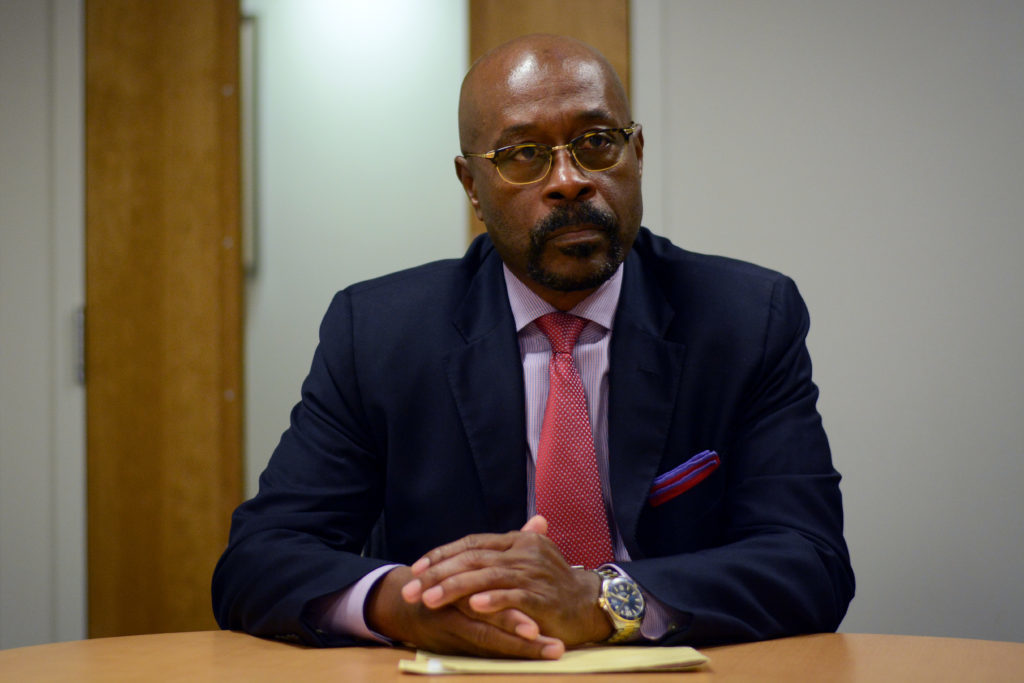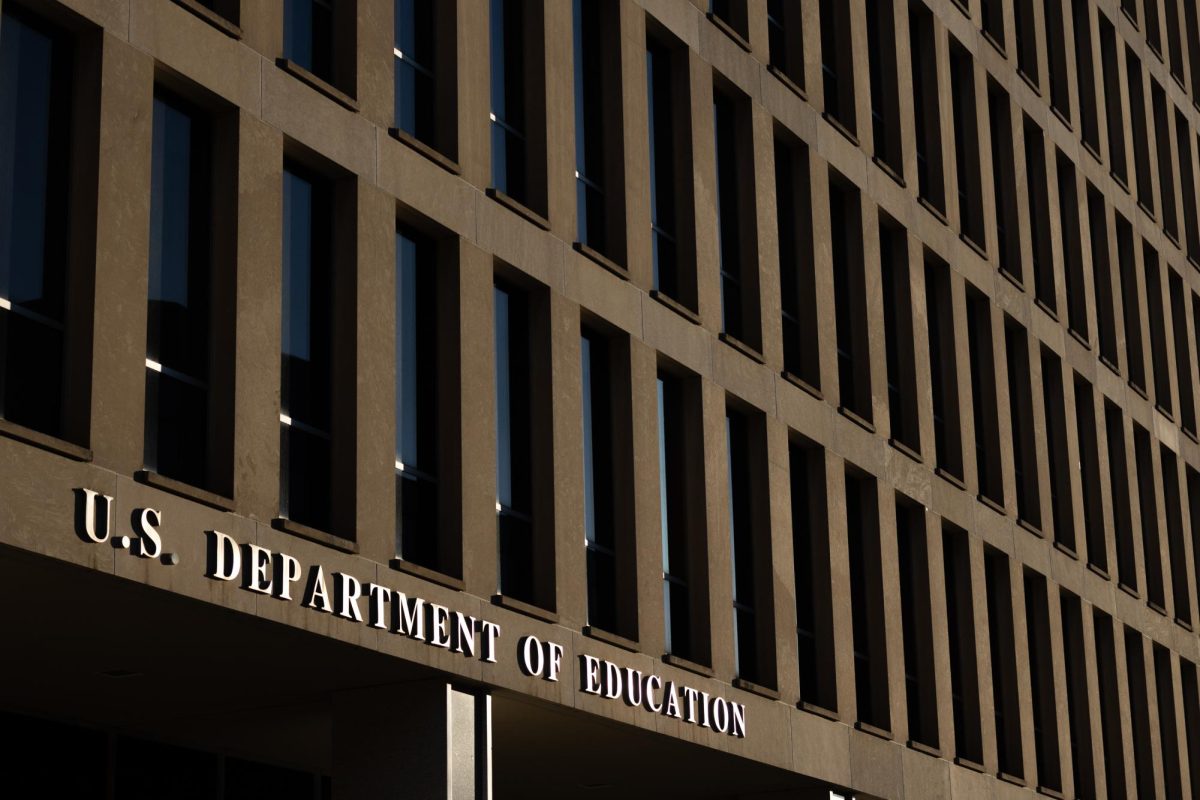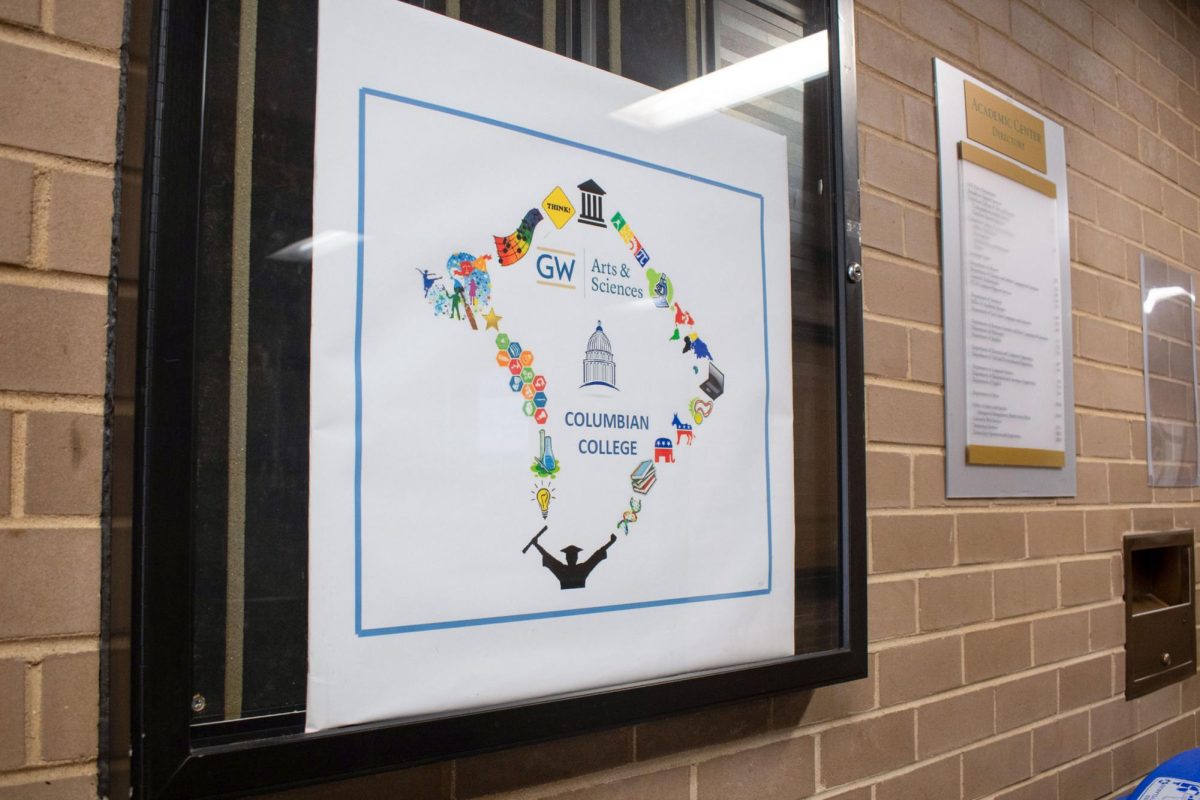Updated: April 9, 2018 at 2:25 p.m.
A series of major reforms to the University Police Department will overhaul the department’s leadership structure – the most substantial changes the department has made in years.
The changes, announced by officials last week, will eliminate the police chief position, give more oversight to the security vice president and create four assistant chief positions each managing a specific area of the department. Experts said the changes were likely an attempt to create a more accountable structure to allow high-ranking officers to more closely monitor all facets of the department.
Under the new system, Darrell Darnell, the senior associate vice president for safety and security, will also assume the title of superintendent of police and absorb most of the police chief’s responsibilities.
Officials gave few new details about the motivation for the changes in an email statement Sunday. University spokeswoman Lindsay Hamilton said the changes are meant to increase efficiency and accountability within the department, echoing the press release last week.
“The University is always evaluating ways to improve operations,” Hamilton said in an email. “The changes to the structure are designed to match the current priorities of the department.”
“More people would give you a higher level of granularity and less of an ability to have things fall through the cracks in one particular venue.”
She said the changes to the staffing structure will take effect immediately and the assistant chief positions will be filled through both internal promotions and external hires. The assistant chiefs will lead four areas, including investigation and threat assessment, operations, administration and physical security and technology management – positions that were previously senior director or commander posts.
“These internal changes will not result in any change in safety and security services to students and the GW community,” she said.
Hamilton declined to name the responsibilities Darnell will assume as the superintendent of police or say who was involved in the decision to create the new structure. She said the new assistant chief positions will report directly to Darnell and “align the department’s priorities” under the four areas each assistant chief will manage to improve accountability and efficiency, but she did not give details on how the structure would achieve those aims.
Officials also announced they would start a student advisory board to weigh in on security policies and procedures that impact students – an idea student leaders proposed in 2016, but never implemented. Hamilton said Darnell will meet with leaders in the Student Association and affinity groups to select representatives for the board.
“GWPD has always sought student feedback on safety and security issues on campus,” she said. “The student advisory board will create a formal structure to ensure ongoing feedback on policies that directly affect students.”
The reorganization comes nearly three months after the resignation of both former UPD Chief RaShall Brackney and Assistant Chief Michael Glaubach on the same day in January, for which the University declined to give an explanation. Brackney did not return a request to comment.
The department’s leadership had been under fire under the previous chief, Kevin Hay, after multiple former officers sued for discrimination and accused the department of creating a hostile work environment.
The new structure at GW is unusual compared to its peer schools. Of GW’s 12 peers, 10 have a designated chief of their campus police department. New York University’s safety department is led by a vice president of campus safety – a structure similar to the one GW is now adopting – and Tufts University has a deputy chief, but not a chief position.
Experts said it is unusual to have someone heading the department that hasn’t had previous experience as a street officer. Those experts said sometimes the department’s size will determine the structure of the force – UPD currently employs more than 100 officers, according to its website.
Darnell, a retired Air Force sergeant, has had an extensive background in security planning working with the White House, D.C. government and the Department of Justice before GW, but his biography on GW’s website and his LinkedIn page don’t list any experience working in a police department.
Although there are guidelines for how to organize police systems, John DeCarlo, the chair of the criminology department at the University of New Haven, said there is no standard leadership structure for a police department.
“It is usually a unique consideration for each organization,” DeCarlo said. “There are traditional and common structures – that doesn’t mean they need to be adhered to or that there is a bad organizational choice if they are not adhered to.”
Officials may have wanted to change the leadership arrangement at this time because the traditional structure did not allow high-ranking officers to have enough oversight of all aspects of how the department functions, he said.
DeCarlo said having four separate assistant chiefs could allow department leaders to concentrate more on individual areas of expertise, like threat assessment, administration or operations. The new system could ensure that each of those areas has a leader carefully monitoring it, he said.
“More people would give you a higher level of granularity and less of an ability to have things fall through the cracks in one particular venue,” he said.
Chris Harris, an associate professor of criminology at the University of Massachusetts Lowell, said most campus police departments have chiefs, but the position’s name doesn’t matter as long as the leadership can fulfill the responsibilities of a chief.
“Chiefs have a lot of power over organization in terms of performance metrics and accountability and setting the tone of the organization, but for the day-to-day work of the department that’s largely not going to change at all,” he said.
Eliminating the chief position could be a result of the “unusual” dual resignation of the chief and assistant chief earlier this year, which afforded the University a “unique opportunity” to reorganize the department, he said.
Harris said the student task force will benefit both the department and the campus community because it will provide a venue for student leaders to discuss their safety experiences and issues with the department.
“A superintendent coming in with no law enforcement background is going to have a much tougher time.”
“The students have certain perceptions and concerns that might very well differ from what the police think is important,” he said.
Under previous leadership, the department held town halls and implemented new measures including buying Segways to help increase visibility within the campus community.
Michael Jenkins, an assistant professor of criminal justice at the University of Scranton, said eliminating the chief position and adding four assistants may ensure the “appropriate flow of orders and control” from University administrators to the lower level members of the police department.
A superintendent with no policing experience might create issues because that official might not fully understand the problems uniformed officers face on a day-to-day basis, he added.
“A superintendent coming in with no law enforcement background is going to have a much tougher time,” Jenkins said. “There’s this idea like, ‘who are you to tell us what to do as our leader when you don’t know the realities of the job that we face on the streets day to day because you’ve never worn a uniform?’”
Brooke Migdon contributed reporting.
This post was updated to reflect the following clarification:
The Hatchet reported that a University spokeswoman declined to say how the new structure will improve accountability and efficiency in the department. University spokeswoman Lindsay Hamilton said the new structure will allow assistant chiefs to report directly to Darnell and help align the department’s priorities, but did not provide details on how that structure would help accountability and accessibility.





